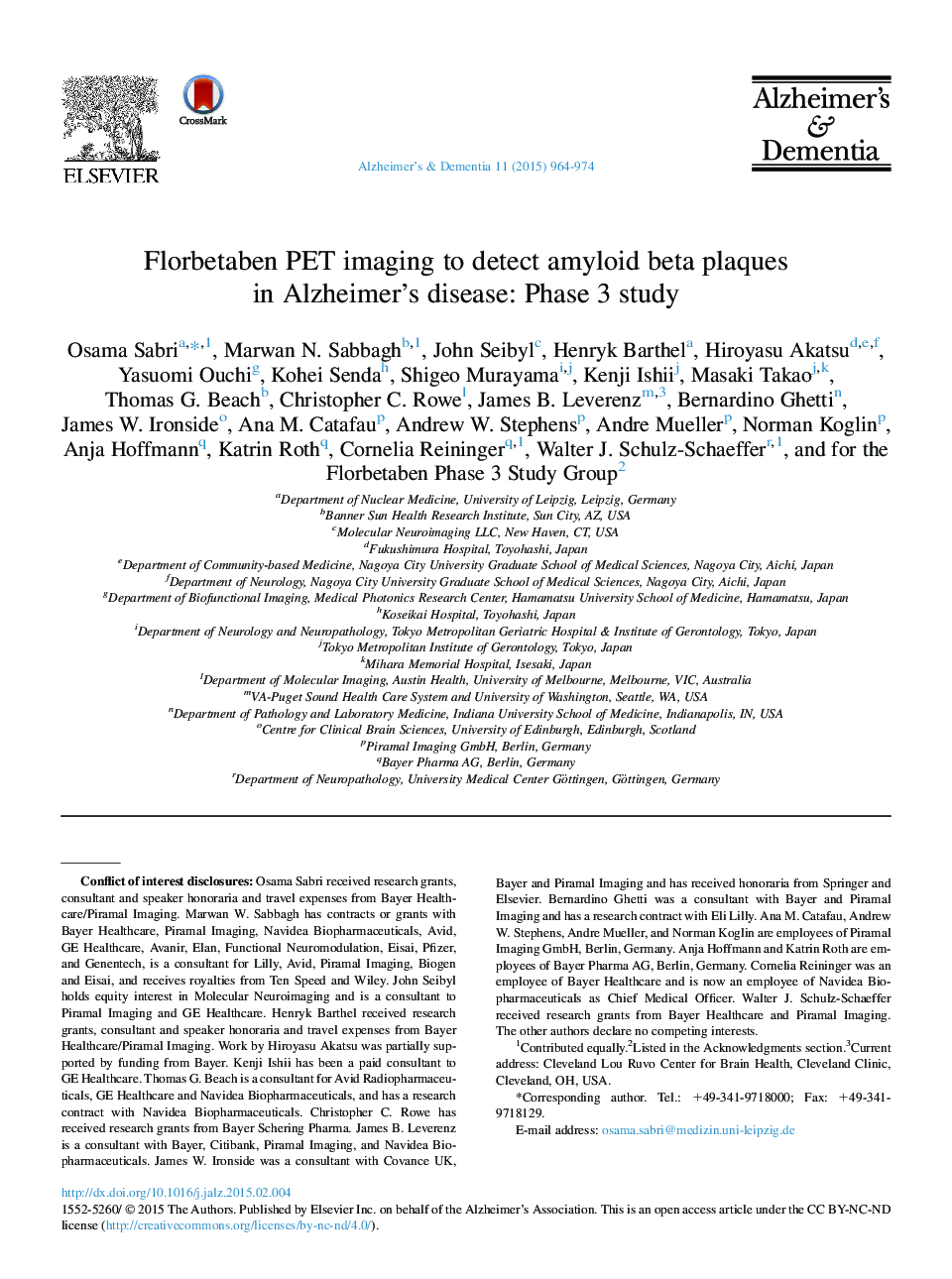| کد مقاله | کد نشریه | سال انتشار | مقاله انگلیسی | نسخه تمام متن |
|---|---|---|---|---|
| 5624056 | 1406236 | 2015 | 11 صفحه PDF | دانلود رایگان |

BackgroundEvaluation of brain β-amyloid by positron emission tomography (PET) imaging can assist in the diagnosis of Alzheimer disease (AD) and other dementias.MethodsOpen-label, nonrandomized, multicenter, phase 3 study to validate the 18F-labeled β-amyloid tracer florbetaben by comparing in vivo PET imaging with post-mortem histopathology.ResultsBrain images and tissue from 74 deceased subjects (of 216 trial participants) were analyzed. Forty-six of 47 neuritic β-amyloid-positive cases were read as PET positive, and 24 of 27 neuritic β-amyloid plaque-negative cases were read as PET negative (sensitivity 97.9% [95% confidence interval or CI 93.8-100%], specificity 88.9% [95% CI 77.0-100%]). In a subgroup, a regional tissue-scan matched analysis was performed. In areas known to strongly accumulate β-amyloid plaques, sensitivity and specificity were 82% to 90%, and 86% to 95%, respectively.ConclusionsFlorbetaben PET shows high sensitivity and specificity for the detection of histopathology-confirmed neuritic β-amyloid plaques and may thus be a valuable adjunct to clinical diagnosis, particularly for the exclusion of AD.Trial registrationClinicalTrials.gov NCT01020838.
Journal: Alzheimer's & Dementia - Volume 11, Issue 8, August 2015, Pages 964-974